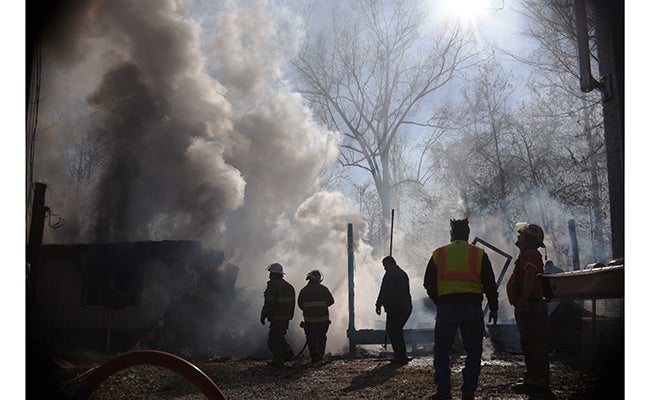Millions of dollars spent during the May 2011 flood
Published 12:04 am Sunday, January 15, 2012
“Our patients had a great concern for our well being because they knew what was going on with the river, but we did notice a significant decrease in our patient load in that six-week period,” White said.
White said he had significant number of limitations in the temporary building, including not having an audiology booth and surgery space normally available in the downstairs area of the building.
“Any procedures that we typically did downstairs in our surgery center, we had to do at one of the hospitals,” White said.
Apart from the private practices that relocated to different buildings, White said the two areas downstairs, the imaging center and surgery center, suffered greatly.
“They had a huge loss because for probably two to three months they just didn’t have any business,” White said.
Apart from the contractor’s fee and revenue lost, the only structural damage to the medical center came as the river crested and water pressure broke portions of the slab underneath the building.
“The pressure was so high that it pushed some water up through the slab and there were areas of the carpet that were wet and tiles had buckled,” White said. “We had flood insurance that took care of those problems.”
White said the medical center and its doctors are indebted to the city for its efforts to protect all the buildings on the riverfront.
“If you were to say ‘What was the most important factor in all this for Riverpark Medical Center?’ it’s that this building was on a lease from the city,” White said. “If we had owned this property none of that would have happened.”
Promise Hospital of the Miss-Lou
Two photos of Promise Hospital of the Miss-Lou surrounded by several feet of water sit on top of Chief Executive Officer Benny Costello’s desk.
The photos are reminders of the period from April 28 to June 28 when the long-term acute care hospital stopped taking patients and discharged its current patients to sister hospitals in Baton Rouge and Vicksburg or hospitals and nursing homes across the river in Natchez.
By May 5 the majority of the building’s contents were moved across the river and the building evacuated.
Costello said a company from Baton Rouge was hired to move the majority of the hospitals things to the former Bad Boy Buggies building on U.S. 61 South in Natchez.
“We moved about half the hospital beds, all the furniture from the patient rooms and all the furniture from the first floor over there,” Costello said. “Anything that wasn’t susceptible to mold or mildew damage was just moved upstairs.”
Costello said the hospital kept all employees on payroll and asked that each of them work a minimum of 24 hours a week.
The employees helped pile sandbags in front of the building, man pumps in each corner of the building and provide security at both the building site and the storage site.
Surrounded by devastation and worry, Costello said the staff still found ways to stay positive through the experience.
“It was an opportunity for everyone to come together and be a team,” Costello said. “It was a fairly unifying experience for all our staff.”
With sister hospitals in disaster prone areas like Baton Rouge and San Antonio, Costello said the executive staff has experience dealing with situations like the flood.
“Unfortunately, we’re fairly skilled at working around these disasters,” Costello said.
The hospital had no water or structural damage.
Costello said the majority of expenses went to renting the buildings for storage and moving all the equipment.
The hospital also lost revenue when it moved patients out, but Costello would not provide a number.
Since the building was on city property, the Hesco baskets and other flood prevention was covered by the city.





